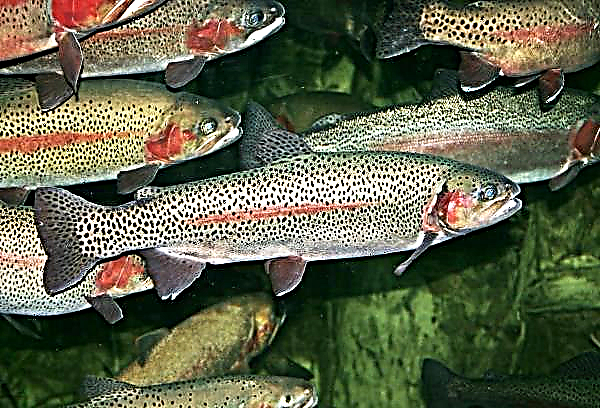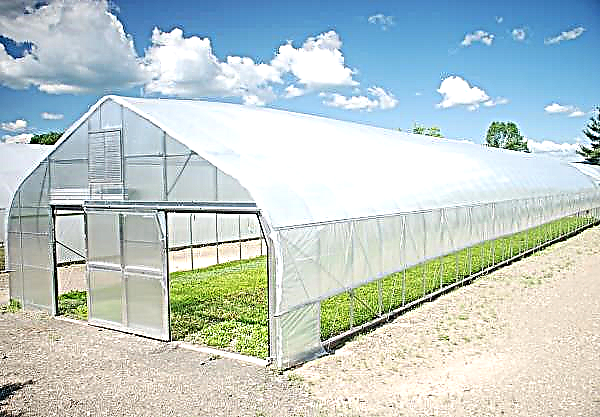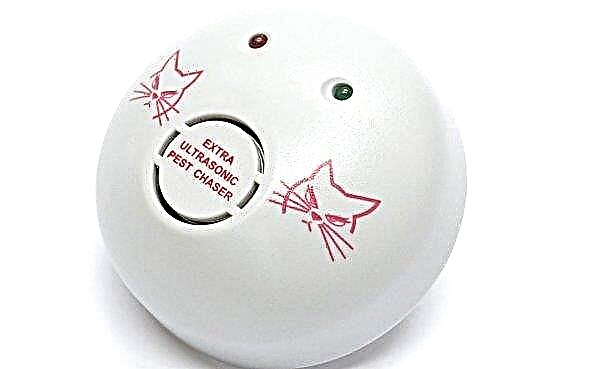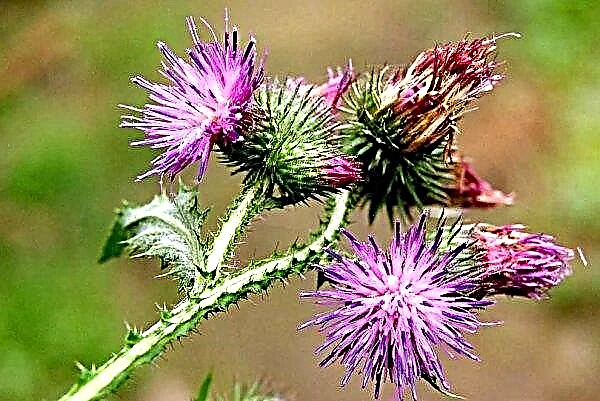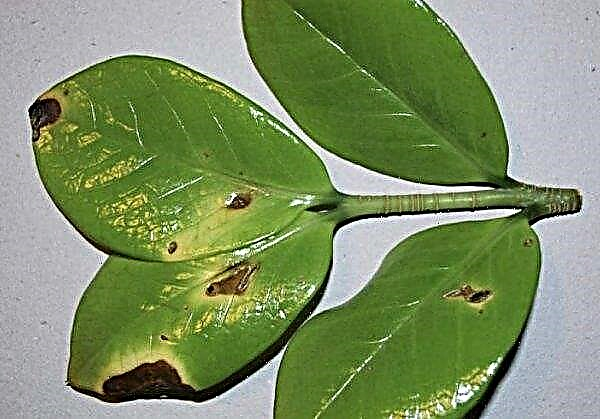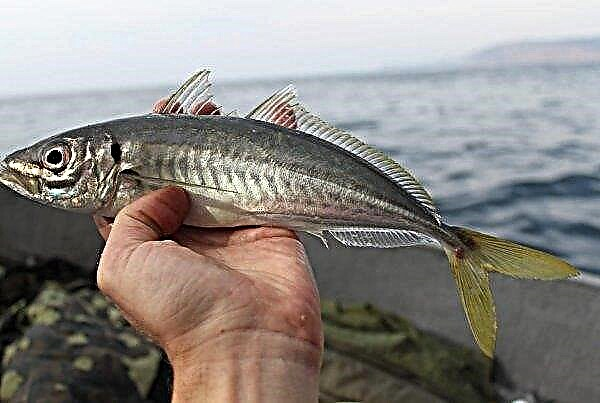Carrots are generally unpretentious culture, and usually there are no special problems with their cultivation. But it happens that a worm appears in root crops, which in a short time eats up or at least deprives of a marketable appearance a significant part of the crop. Where the worms come from in carrots and how to deal with them are described in more detail in this review.
Causes of parasites
The first thing a farmer needs to find out if he has noticed signs of root crop damage by pests is to find out exactly who eats the sweet pulp. Unfortunately, the circle of “suspects” is not limited to one parasite, there can be several, and if some live directly in the ground, others on its surface, respectively, the methods of exposure to such insects (the main eaters of carrots are insects, or rather their larvae , and not worms in the true meaning of this concept) are not always the same.
Did you know? Contrary to the existing misconception, there is not much sugar in carrots. So, in 100 g of fresh root crops contains no more than 3.5 g of simple sugars, all other carbohydrates are fiber and starch.
Carrot fly
This name applies to the dipteran insect of the family Hairless. The body length of an adult (adult) is about 0.5 cm, the wings are transparent with yellow veins, the abdomen is white, the back is glossy black. After hibernating in the soil, in early spring the fly lays eggs on a carrot bed, but not underground, but from above, at the base of green shoots.

The larvae hatching from the eggs are the very “worms” that immediately climb into the root crop and begin to actively absorb its flesh. These small caterpillars have a length of approximately 0.5 cm, they can be recognized by their light yellow color, tapering front part and two tiny black processes on the back. Legs and head are absent in the larva.

Having reached the maturity phase, the larvae again get out of the root crop, but this time remain in the soil, turning into pupae, from which adult flies then give birth to the second generation of parasites in a season. Usually this happens closer to mid-summer, therefore, after eating the pulp of mid-ripening and late root crops, the second wave of larvae pupates and remains in this state in the garden until next spring.
Carrot flies prefer to parasitize on the largest and unsweetened varieties of carrots with an elongated form of root crops, in addition, for lack of suitable food, they can hit turnips.
Symptoms of infection of a bed of carrots fly:
- cessation of culture growth;
- withering tops;
- redness of the leaves;
- the presence in the ground near the root of the root processes separated from the main part of the root processes with traces of damage;
- rotting of root crops.
If you cut it, you can clearly see the numerous narrow passages covered with a brown coating - these are waste products of the carrot fly larvae.
Wireworm
The wireworm is also a larva, an adult of which is called a nutcracker bug, a jumping black insect that emits characteristic clicking sounds during movement. These bugs spend most of their lives in the larval phase, and it is precisely the larvae, which, in contrast to the practically harmless imago, represent a serious problem for crops, therefore they were even given their own name.

Unlike smooth and small larvae of carrot flies, wireworms have a very hard outer cover, painted in a more saturated yellow or orange color and divided into visible segments. In addition, these insects are much longer, their body can reach a length of 25 to 30 cm.
Nutcracker beetles lay eggs in the ground, and hatched larvae (in the clutch their number can exceed one and a half hundred) immediately begin to parasitize in the root system of a variety of cultures. During the first year of the wireworm, dense root crops like carrots to the insect “too tough”, its main food is the roots of small plants, including weeds.
Did you know? It is interesting that in many European languages the name of the nutcracker beetle larva has approximately the same etymology as in Russian. So, the British call the wireworm “wireworm”, which literally can be translated as “worm-wire”, the Germans - “drahtwurm”, that is, “worm-wire”, “wireworm”.
However, the life cycle of this pest is an average of 3-4 years, and already in the second year, when the larva has grown sufficiently, it moves to the garden and destroys almost any garden crops that it meets on its way. In addition to carrots, potatoes, as well as radishes and turnips, suffer very much from wireworms.

Unfortunately, it is impossible to completely destroy the wireworm on the site, since the population of click beetles is very large, and they are found almost everywhere. Therefore, control methods usually aim only to reduce the number of parasites to such an amount that the damage they cause becomes not too noticeable.
Important! The wireworm loves thickened landings with maximum humidity. Also a favorable factor for this pest is the increased acidity of the soil.
Typical symptoms of carrots with wireworms:
- the presence of traces of rotting on root crops;
- damage to the plant by fungal, bacterial and other infections that easily penetrate the root crop through the “gate” opened by worms;
- black dots on the pulp, clearly visible when cut (appear as "scars" from the moves made by young larvae of the passages, which subsequently overgrow);
- through thin holes penetrating the entire root crop, or numerous passages of different lengths and directions;
- overall decline in crop yields.

Carrots attacked by wireworms should not be eaten.
Exclamation point scoop
Another name for this rather large butterfly is an exclamation night light. The wingspan of an adult varies between 32–46 mm. Like other representatives of the scoop family, the nightlight exclamation has a nondescript brown or gray color of wings with black spots. The location and shape of these spots resemble an exclamation point, which gave the insect a specific name.

As in the case of the carrot fly and wireworm, it is not imago that causes harm to crops, but the larvae of the exclamation scoop, which are small but quite visible to the naked eye caterpillars 30–50 mm long yellow or dirty brown in color with a red front part, characteristic of light a line along the upper back, black shadow-like stripes on the sides and black spiracles at the back.

The female butterfly lays the first eggs in the soil at the end of spring, and the caterpillars already hatched from them begin to parasitize in the aerial parts of plants and also on the lower leaves. Depending on the climatic zone, one to three generations of pests can form in a season, and their development takes place in parallel, that is, the same individual can lay eggs several times during the summer. An insect in the form of a pupa hibernates, having delved into the soil by about 10 cm, although in some cases the caterpillars leave for the winter “alive”, without turning into pupae.
Important! Up to 800 eggs can be in one clutch of an exclamation scoop!
In addition to carrots, the caterpillars of the exclamation scoop are dangerous for several dozen cultivated plants, and these parasites can not only bite into the flesh of root crops and damage the roots, but also gnaw young shoots and completely eat leaves. For this reason, the parasite, like other scoops, is often called gnawing. Caterpillars parasitize at night, so it’s quite difficult to see them on the surface.

Symptoms of life on the site of the exclamation scoop is a combination of two factors:
- nibbled leaves or shoots on the bottom of the plants;
- gnawed moves from the movement of caterpillars in the pulp of root crops.
A distinctive feature of the moves made in carrots by the larvae of the exclamation scoop is their unevenness. A caterpillar, for example, can gnaw a root crop from the outside, gnaw in its middle a round hole in the form of a kind of hollow, eat out fragments of pulp from different sides from itself, etc.
Did you know? Butterflies can harm not only plants, but also animals, including humans. So, the most poisonous butterfly in the world is called the Sailboat Antimachus (Papilio Antimachus), lives in Africa and has practically no natural enemies, because in any danger it spreads exceptionally toxic and caustic substance.
Ways to combat parasites
It is necessary to deal with any of the pests mentioned above very quickly, because after the caterpillar has started to gnaw carrots from the inside, it is almost impossible to completely save the crop. The traditional method of treatment is the use of insecticides.

Most modern drugs have a systemic effect, that is, they are effective against several types of insects, but if the pest is known, it is better to choose the agent that is most effective for this particular parasite. Below are a few trade names of insecticides used to combat various carrot pests.
| Carrot fly | Wireworm | Exclamation point scoop |
|
|
|
These drugs are designed to scare away adults from the garden and prevent eggs from being laid, which is why they are used, as a rule, to spray plants from above. However, it must be borne in mind that such use of the product does not mean at all that it does not affect the root crop and makes its use dangerous, therefore, before proceeding with the treatment, you need to carefully study the instructions, paying particular attention to the question of how much After this procedure, carrots can be eaten.
After the pest larvae are in the soil, spraying ceases to be effective. In this case, it is necessary to use other drugs that act directly in the soil. Some of them, for example, Bazudin, Provotoks, Mukhoed, etc., are produced in granules, they need to be mixed with sand and simply scattered on a bed; others, for example, Bezar, are bred with water and used for irrigation. There are also modern biological agents, which are spores of carnivorous fungi or other organics that destroy soil parasites. An example of such a bioinsecticide is a drug called Metarizine.Important! As a general rule, at least a month must pass from the moment the bed is treated with an insecticide until harvest, however, some drugs are so toxic that they are not used at all during the growing season, but are used for seed treatment or laying in the soil for the winter.
How to protect carrots from pests
In order to not have to resort to the help of chemicals to save carrot beds from pest attacks, there are a number of preventive measures that can reduce the likelihood of the appearance of the most dangerous parasites for root crops or minimize the damage they cause.

These measures include:
- Crop rotation. Carrots and wireworms, in addition to carrots, affect other root crops, in particular turnips and potatoes. For this reason, by planting such root crops in the same place for several years in a row, the farmer multiplies the probability of crop damage by pests, because, having left hibernation, the insect immediately finds itself in close proximity to a favorite food source for its larvae. Parsley, parsnip, celery and other herbs with dense fragrant roots, which have the same enemies with carrots, are also bad precursors for carrots. But after legumes, cabbage and solanaceous (except for potatoes) carrots grow very well and are less damaged by worms.
- The right choice of "neighbors". There are a number of plants whose smell is very disliked by most insects. In particular, carrot flies try to stay away from onions and garlic, so if you plant these crops closer to carrots, an adult fly is unlikely to want to lay eggs in such an unfavorable territory.
- Providing the recommended distance between plants, preventing thickening of the planting.
- Deep digging of the soil in the fall, before the onset of frost. Almost all the main carrot pests winter in the ground, and usually they do not climb deeper than 10 cm from its surface. This means that a careful digging of the beds to the depth of the spade bayonet will bring most of the pupated larvae to the surface, where they will freeze or become prey for birds before spring. A good result is given by the "control" digging in the spring.
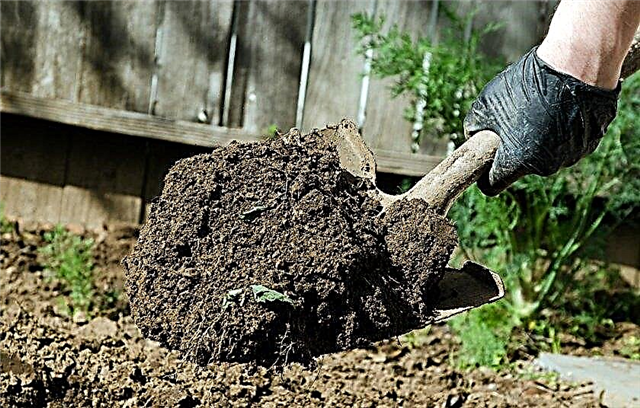 In this case, the larvae that survived in the earth, when exposed to the open air in the absence of food, are also most likely to die.
In this case, the larvae that survived in the earth, when exposed to the open air in the absence of food, are also most likely to die. - Soil composition adjustment. Carrots prefer soil with a slightly acidic or neutral reaction, if this parameter is not observed, the plant is sick and worse resists pests. On the other hand, some parasites just with great pleasure settle in an acidic environment.
- Selection of a good place on the site. You should not plant carrots near shrubs or trees, as well as in lowlands: in shaded and waterlogged areas, the culture feels uncomfortable, and its main enemies - in the best way.
- Adjusting the timing of planting and harvesting taking into account the life cycle of pests. For example, in April, when the main parasites lay their eggs, carrots, depending on the climatic zone, should either not be planted yet, or, on the contrary, should be strong enough, and by the time the second clutch is formed, early varieties can already be harvested. Sometimes, in order to save the harvest, an even simpler method is used: for the period of the proposed egg laying (usually the second generation of pests performs this function for three weeks from the second decade of July to the first decade of August, the first - in the middle of spring) the carrot bed is covered with cloth, which blocks the insect's physical access to the plant and forces the pest to look for another place to breed.
- Preventive seed treatment before sowing. Despite the fact that parasite larvae are not preserved in seeds, soaking the seed material in fortifying or even insecticidal preparations may well protect young seedlings from the first generation of pests.
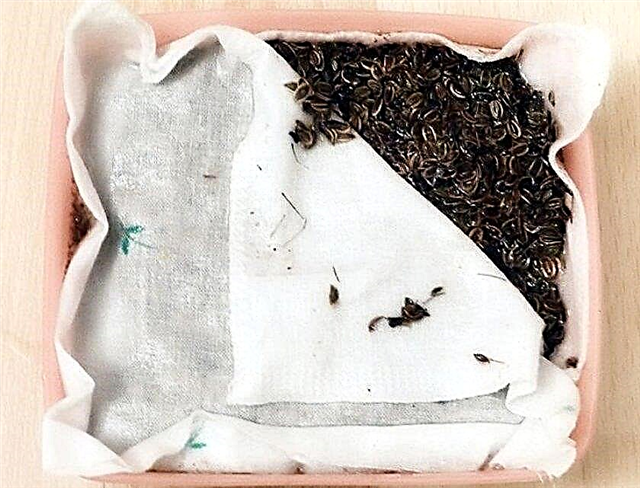
- Use of carrot varieties with genetic resistance to those pests that pose the greatest danger to the region. For example, invasions of a carrot fly are not very scary for such varieties as Olympus, Flacco, Perfection, Vitamin 5, Nantes 4, Losinoostrovskaya 13, as well as the Calgeri F1 hybrid.
- Thorough soil care, which primarily includes weed control, which is the reserve for many pests, in particular, which is food for young wireworm larvae. Loosening the soil after irrigation, in addition to retaining moisture in it, allows you to destroy a certain number of caterpillars or pupae that live in the ground.
To save carrots from being defeated by worms is not an easy task. Of course, it can be solved with the help of traditional insecticides, which are highly effective, but at the same time, the resulting crop, while maintaining its external attractiveness, will no longer be as useful and safe as we would like. Therefore, it is better to deal with small pests that eat root vegetables from the inside in other ways, the essence of which is reduced to strict observance of the agricultural technology of growing vegetable crops and creating on-site conditions that are as uncomfortable as possible for any parasitic insects.Did you know? From carrots you can cook many interesting dishes and drinks, but perhaps the most original of them - tea and ... coffee. The first was very loved by our ancestors during the time of Peter I, and the second at a certain stage in history was officially included in the composition of the soldiers rations in Germany.

 In this case, the larvae that survived in the earth, when exposed to the open air in the absence of food, are also most likely to die.
In this case, the larvae that survived in the earth, when exposed to the open air in the absence of food, are also most likely to die.

